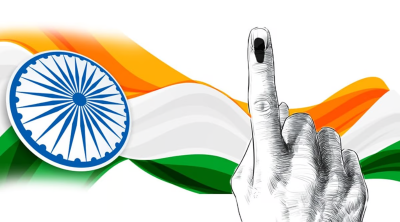Context:
Simultaneous elections, an idea that has been intermittently discussed in Indian political circles, has gained renewed attention with the constitution of a High-Level Committee (HLC) headed by former President Ramnath Kovind in September 2023. This committee aims to explore the possibility of holding simultaneous elections for the Lok Sabha, State Legislative Assemblies, and local bodies across all states. The background of this proposition traces back to the early years of independent India when Lok Sabha and State elections were held concurrently. However, due to frequent premature dissolutions, elections are now staggered. The argument for simultaneous elections is rooted in considerations of cost, governance, administrative efficiency, and social cohesion.
Benefits of Simultaneous Elections:
● Cost Efficiency: The financial burden of conducting elections is substantial, with an estimated cost of around ₹4,000 crore for the Central government per Lok Sabha election. Simultaneous elections would streamline this process, reducing costs for both the Central government and individual states. Parties and candidates also incur significant expenses during election campaigns, making simultaneous elections a cost-effective measure.
● Governance and Administrative Convenience: Frequent elections at the state level keep political parties in a perpetual campaign mode, hindering effective policy-making and governance. The Model Code of Conduct during elections restricts the announcement of new schemes or projects, further impeding governance. Simultaneous elections would provide a dedicated period for focused governance, minimizing disruptions caused by repeated electoral cycles.
● Administrative Efficiency: The administrative machinery often slows down during election periods as the primary focus shifts to election conduct. Simultaneous elections would reduce the frequency of such disruptions, enabling better administrative efficiency. Paramilitary forces, crucial for election security, are currently frequently moved around the country, impacting their deployment in specific regions. Simultaneous elections could streamline the deployment process, enhancing security measures.
● Social Cohesion: The divisive nature of high-stakes elections, exacerbated by social media, has led to increased polarization in the country. Simultaneous elections might mitigate this trend by reducing the frequency of polarizing campaigns. A less frequent election cycle could contribute to social cohesion by minimizing the deepening of divides in India's diverse landscape.
Challenges of Simultaneous Elections:
● Federal Character Concerns: India's federal structure involves distinct states with unique issues. Conducting simultaneous elections may risk overshadowing state-specific concerns with national issues, providing an advantage to national parties over regional ones. This potential imbalance contradicts the federal spirit of the Constitution, which recognizes the autonomy of states in certain matters.
● Impact on Democratic Feedback Mechanism: Elections serve as a crucial feedback mechanism for the government in power. Frequent elections allow for timely adjustments to policies based on electoral feedback. Simultaneous elections, held only once in five years, might disrupt this continuous feedback loop, potentially affecting the responsiveness of governments to public concerns.
● Constitutional Amendments Required: Implementing simultaneous elections would necessitate constitutional amendments. India's parliamentary democracy allows for the dissolution of the Lok Sabha or state assemblies under certain circumstances. Fixed five-year tenures for these bodies would require changes to constitutional provisions, including Articles 83, 85, 172, and 174, dealing with the duration and dissolution of legislative bodies.
Recommendations for Simultaneous Elections:
● Phased Simultaneous Elections: One recommendation proposes a phased approach, suggesting that elections to the Lok Sabha and approximately half of the State assemblies be held together in one cycle, with the remaining state assembly elections held in another cycle after two and a half years. This approach aims to balance the benefits of simultaneous elections while addressing the unique issues of individual states.
● Mandatory Confidence Motion with No-Confidence: To discourage premature dissolution of the Lok Sabha or State Assembly, a recommendation suggests that any 'no-confidence motion' should be accompanied by a 'confidence motion' for the formation of an alternate government. This mechanism aims to prevent hasty dissolutions and encourages efforts to form an alternative government through feasible realignments.
● Clubbing Bye-Elections: Another proposal advocates for clubbing bye-elections caused by deaths, resignations, or disqualifications of members and conducting them once a year. This would streamline the process and minimize disruptions to the regular electoral cycle.
International Practices on Simultaneous Elections:
Parliamentary democracies like South Africa, Sweden, and Germany provide examples of fixed tenures for their legislatures. In South Africa, elections to the National Assembly and provincial legislatures occur simultaneously every five years, with the President elected by the National Assembly. Sweden and Germany elect their Prime Ministers and Chancellor, respectively, through their legislatures every four years. Notably, a lack of confidence against the German Chancellor necessitates the election of a successor. These international practices illustrate diverse approaches to fixed tenure and simultaneous elections, offering valuable insights for India's deliberations.
Ideal Solution and the Way Forward:
While there is a lack of consensus among political parties on simultaneous elections, a potential middle ground could involve conducting Lok Sabha elections in one cycle and all State assembly elections in another cycle after two and a half years. This compromise could address the major benefits of simultaneous polls without compromising democratic and federal principles. Additional recommendations, such as mandatory confidence motions and clubbing bye-elections, could be adopted through suitable constitutional amendments.
However, achieving this middle ground requires political consensus, emphasizing the importance of involving all political parties in the decision-making process. Over the next decade, with careful consideration and collaboration, India could implement a system of simultaneous elections that balances the advantages of efficiency with the preservation of democratic and federal values. Continuous dialogue and cooperation among political stakeholders are essential to navigate the complexities and challenges associated with this significant electoral reform.
|
Probable Questions for UPSC Mains Exam
|
Source – The Hindu








